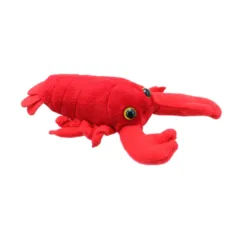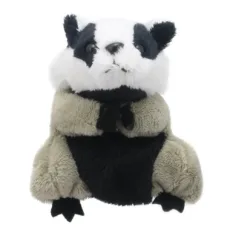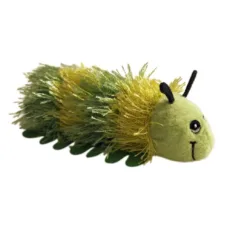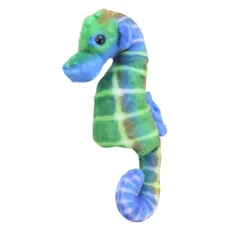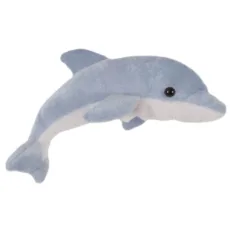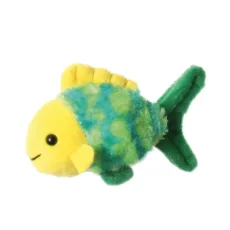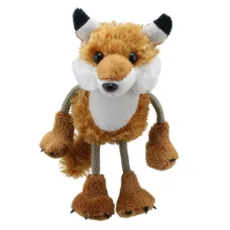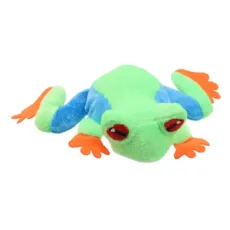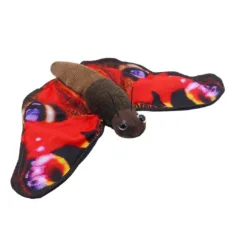How to Tell Stories with Wildlife Finger Puppets
Introduction to Wildlife Finger Puppets
Wildlife finger puppets are small, glove-like figures that represent a diverse array of animals, from beautiful kingfishers and playful dolphins to tiny insects and woodland mammals. These miniature performers fit snugly on the fingers, enabling the storyteller to animate them with expressive gestures and lifelike movements. Whether used in a formal classroom, an engaging bedtime routine, or an afternoon playtime, wildlife finger puppets captivate the imaginations of both children and adults alike.
One of the most compelling aspects of wildlife finger puppets is their ability to make learning and storytelling a multisensory experience. As children manipulate the puppets, they not only listen and watch but also participate interactively. This enhances creativity, improves fine motor skills, and encourages social interaction. For adult storytellers, puppets provide an engaging method to convey stories, lessons, and moral values in an entertaining way.
The benefits of using wildlife finger puppets extend far beyond mere entertainment. When children use these puppets, they practice storytelling, develop language skills, and explore imaginative play. This type of engagement helps them to better understand narrative structures and vocabulary. Additionally, the physical act of manipulating the puppets aids in fine motor development, reinforcing hand-eye coordination and dexterity.
Finger puppets have a rich history that spans various cultures and eras. Originating from ancient China, where they were initially crafted from leather and discussed folklore and historical tales, finger puppets have since evolved and spread worldwide. In Europe during medieval times, they were used to depict scenes from popular medieval literature, while in modern contexts, they are often incorporated into educational and therapeutic practices.
In sum, wildlife finger puppets serve as a versatile and enjoyable tool for storytelling. They not only entertain but also educate and foster essential developmental skills, making them a valuable addition to any storyteller’s repertoire.
Setting the Stage for Your Wildlife Stories
Creating a compelling setting is crucial for engaging storytelling, especially when it comes to wildlife finger puppet stories. A well-defined backdrop not only captures the audience’s imagination but also provides context and enhances the narrative. The setting helps anchor the story, making it more relatable and visually stimulating.
To begin with, consider using simple DIY backgrounds. These can be crafted from everyday household items such as coloured paper, cardboard, and markers. For a forest scene, a combination of brown and green hues with tall tree cutouts and maybe a moonlit sky can work wonders. And if your story is set in the ocean, blue shades with seagress, fish and crab cutouts, and a few bubbles can bring an underwater world into view.
Props can play a significant role in enriching the storytelling experience. Simple items like pebbles can serve as rocks, while cotton balls can be clouds or snow. Using small pieces of fabric, such as brown cloth for mud or blue cloth for water, can add another layer of realism to your scene.
Sound effects are another fantastic tool to elevate your storytelling. They can be easily created with household items. Crumpling paper can mimic the sound of rustling leaves, while a gentle tapping can imitate rain. Animal sounds, like the roar of a lion or the chirping of birds, can be emulated or sourced from simple sound apps. These effects draw listeners into the story, making the experience more immersive.
Whether you’re depicting a serene forest with its rustling leaves, or the vast expanse of the ocean with its myriad sea creatures, integrating these environments into your storytelling process aids in creating a vibrant and dynamic narrative. Through the imaginative use of household items, you can craft a rich setting that complements and elevates your wildlife finger puppet stories.
Developing Characters and Plotlines
Creating memorable stories with wildlife finger puppets begins with developing distinct characters and engaging plotlines. Each puppet should have a unique personality and set of characteristics that make them stand out. For example, a duck puppet could be portrayed as friendly and chatty, reflecting wild duck behaviour with other waterfowl, while a worm puppet could wiggle, enjoy turning the compost heap to make food and love cover of darkness.
Effective character development also involves giving each puppet a recognizable voice or manner of speaking. Experimenting with different pitches, accents, and speech patterns can make the characters more lifelike. A clever voice might suit a fox puppet, whereas a chirpy, high-pitched tone would be appropriate for a robin puppet. This audio distinction helps children identify the characters more easily and adds an extra layer of engagement.
Simple yet captivating plotlines are crucial to maintain the interest of the audience, especially young children. Begin by leveraging everyday scenarios that children can relate to, such as ‘A Day in the Life of a Forest.’ This story could revolve around a group of animal puppets journeying through the woods, encountering various adventures and dilemmas. Another suggestion is ‘The Adventures of Ocean Friends,’ where aquatic creatures band together to solve problems and learn valuable lessons.
When crafting these stories, it’s important to include elements of conflict and resolution, which not only make the narrative exciting but also teach problem-solving skills. For instance, in ‘A Day in the Life of a Forest,’ the puppets could face challenges like crossing a river or finding food, creating opportunities for teamwork and creativity. ‘The Adventures of Ocean Friends’ might involve resolving misunderstandings among sea creatures, emphasizing the importance of communication and empathy.
Story prompts and outlines can be incredibly useful for those getting started. By providing a skeleton of the narrative, you can allow for flexibility while giving a clear direction. Prompts such as “What obstacle will the lion overcome today?” or “How will the ocean friends work together to clean their habitat?” can serve as springboards for imaginative and meaningful tales.
Interactive Storytelling Techniques
Involving the audience in the storytelling process is key to making the experience both interactive and engaging. One effective technique is to ask questions to the audience as the story unfolds. For instance, you might pause and ask, “What do you think the fox will do next?” This not only captures the audience’s attention but also stimulates their imagination and critical thinking skills.
Encouraging predictions about what might happen next can further deepen engagement. You could say, “Before the rabbit hops to the next meadow, what do you think it will find there?” These moments of anticipation keep the audience, especially children, more invested in the outcome of the story.
Another dynamic way to involve the audience is by letting them control some of the wildlife finger puppets. This can be done by assigning specific roles to different children or by passing out puppets for them to manipulate during certain parts of the story. For example, if the story involves a group of animals, you might hand out finger puppets of a seahorse, a dolphin, and a fish, and let the children bring these characters to life.
Managing a group of children during an interactive storytelling session can be challenging. It’s helpful to establish some ground rules before beginning. For instance, you could explain that only one person should speak at a time and that everyone will have a turn. Using clear, calm instructions can help maintain order and focus.
Incorporating call-and-response patterns is another excellent interactive element. This technique involves having the storyteller say certain phrases that the audience repeats or responds to, such as “When I say ‘Quack,’ you all quack back like ducks!” This not only helps to maintain engagement but also makes the session more lively and fun.
Adding educational elements such as fun facts about the animals featured in the puppets can enrich the storytelling experience. For instance, you could weave in interesting tidbits like, “Did you know that owls can rotate their heads almost all the way around?” This blend of entertainment and education makes the storytelling session both enjoyable and informative for the children.
Storytelling Finger Puppets
-
 Red Lobster Finger Puppet by The Puppet Company£3.99
Red Lobster Finger Puppet by The Puppet Company£3.99 -
 Badger Finger Puppet by The Puppet Company£3.99
Badger Finger Puppet by The Puppet Company£3.99 -
 Green Caterpillar Finger Puppet by The Puppet Company£3.99
Green Caterpillar Finger Puppet by The Puppet Company£3.99 -
 Blue Seahorse Finger Puppet by The Puppet Company£3.99
Blue Seahorse Finger Puppet by The Puppet Company£3.99 -
 Dolphin Puppet by The Puppet Company£3.99
Dolphin Puppet by The Puppet Company£3.99 -
 Fish Finger Puppet by The Puppet Company£3.99
Fish Finger Puppet by The Puppet Company£3.99 -
 Red Fox Finger Puppet by The Puppet Company£3.99
Red Fox Finger Puppet by The Puppet Company£3.99 -
 Tree Frog Finger Puppet by The Puppet Company£3.99
Tree Frog Finger Puppet by The Puppet Company£3.99 -
 Peacock Butterfly Finger Puppet by The Puppet Company£4.99
Peacock Butterfly Finger Puppet by The Puppet Company£4.99
